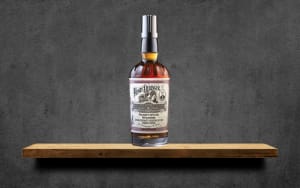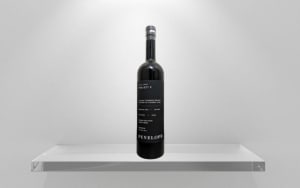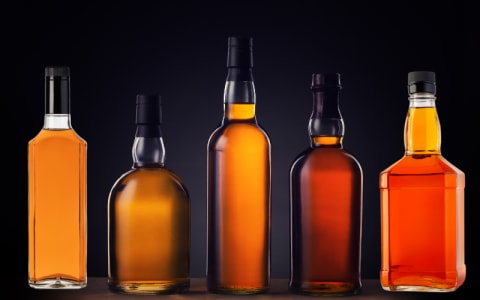In the rugged corners of the Pacific Northwest, where thick forests meet misty coastlines, a distillery in Seattle has spent years chasing something truly unique. Westland Whiskey, started back in 2010, set out to prove that American single malt could stand on its own. They didn't just follow the usual path with bourbon barrels and familiar grains. Instead, they turned to a rare oak tree that grows only in their backyard – the Garry oak. This wood, tough to work with and even harder to find, has become the heart of their Garryana series. And now, for the distillery's 15th anniversary, they've released the tenth edition: a 10-year-old version that's their first with an actual age statement on the bottle.
Think about how far American single malt has come. Just ten years ago, hardly anyone outside a small group of dedicated fans knew what it was. Big names like Jack Daniel’s and Suntory Global Spirits are jumping in today, now that it's an official category. But Westland was there from the start, pushing boundaries. Their Garryana line kicked off in 2015, using barley from local Washington farms and aging it in casks made from Garry oak. That first release turned heads across the country, with whiskey lovers snapping it up faster than shelves could stock it. Every year since, these limited bottles have earned high praise, vanishing almost immediately.
This new 10-year Garryana builds on a decade of trial and error with that tricky oak. Shane Armstrong, the master blender who's been at the helm since the beginning, knows its quirks inside out. “I have learned to be suspicious of Garry oak," he says. "The casks can be quite variable depending on how long the wood was air-dried and cooperage treatment. Every year, I approach the vatting as if I know nothing and let the prototypes guide the way.” It's not like the standard American white oak that most distilleries rely on. Garry oak brings muted vanilla and coconut, but amps up the spice and clove. There's always this swirling, curious spice that Armstrong works hard to highlight and balance.
For this edition, Armstrong aged the whiskey a full ten years – a first for the series. “The development of esters is an interesting arc,” he notes. “After 10 years of development, the complex fruit notes begin to compete with the cask character and make for a multi-dimensional whiskey… there is an expansiveness and delicacy to this edition of Garryana only possible at this level of maturity.” The result? A spirit that feels layered and refined, pulling in flavors from multiple casks to play off the Garry oak's wild side.
The official tasting notes paint a vivid picture. On the nose, expect aromas of mulled wine with clove, walnut fudge brownie, and lemon Danish pastry. Take a sip, and you'll find notes of s’mores, dehydrated strawberry, toasted cumin seed, and blood orange taking over. It's bottled at 50% ABV, with maturation mostly in first- and second-fill Garry oak casks. To round things out, they blend in whiskey from Pedro Ximénez sherry, rum, and ex-bourbon casks – what Armstrong calls the "supporting players."
He explains the strategy: “Garry oak is dramatically different from white American oak and has more in common, profile-wise, with French oak. In general, Garry oak has muted vanilla and coconut, but exaggerated spice and clove notes. The precision of the clove character can vary, while the curious spice always swirls about. The real work is featuring and complementing this nebulous note.” Those other casks help create balance. “There was a draw to make this an expansive vatting, to see how far one could space the Garry oak notes before becoming unmoored,” Armstrong adds. “By using older pale-malt spirit aged in bourbon, rum, and other second-fill casks, we were able to balance power and grace.”
Garry oak itself is a big part of what makes this whiskey special – and challenging. Known scientifically as Quercus garryana, it grows only from southern British Columbia down through Washington and Oregon, into northern California. Its forests have shrunk to about 5 percent of what they once were, thanks to farming and building. Westland sources it sustainably, partnering with foresters, mills, and coopers to build a supply chain from scratch. They've even committed to restoring habitats, ensuring this resource sticks around. The wood is dense, with irregular grain that's gnarled, brittle, and low-yielding. Coopers hate it because it's hard to shape into barrels, and it's pricey because it's so scarce.
But that's the point. This isn't some mass-produced spirit. The barley comes from Washington fields, distillation happens at the Seattle spot or up in Skagit Valley, and the aging pulls in that local oak to capture the essence of the Pacific Northwest. Armstrong puts it poetically in a letter, quoting Dune: “The spice extends life…expands consciousness.” For him, working with this regional oak is magic. “There is a magic to working with an oak species unique to our region,” he said in a press release. “A shorthand for showcasing how Single Malt Whiskey makes sense here, from raw materials and climate to inspiration and collaboration. Each edition seeks a supporting cast to concentrate or contrast. This release, our very first to boast an age statement, represents refinement over time, a small gesture to all those tasks tallied in service of something new.”
If you're the type who appreciates a good story in your glass, heading to the distillery is the way to go. Tours let you dive into the process, tastings showcase the flavors, and there's a bar right there to sip and savor. It's an immersion in what makes the Northwest tick – the rain-soaked woods, the independent spirit.
Of course, getting your hands on a bottle of this 10-year Garryana won't be easy. Only 4,608 bottles are hitting shelves nationwide, with an MSRP of $150. Washington state gets first dibs starting in October, and the rest of the country follows about a week later. What makes it even rarer? A heist straight out of a movie.
Back in July, a driver showed up at the warehouse with fake papers. He loaded up a truck with 12,000 bottles of Westland whiskey total, including 3,000 of the brand-new 10-year Garryana. The shipment was supposed to head to a warehouse in New Jersey. When it never showed, the team called in law enforcement. The bottles are still missing, no recoveries yet.
Armstrong was traveling when it happened. “I was out of town when the theft occurred,” he recalls, “so there was a rather shocking ‘Oh, you haven’t heard’ moment. My initial reaction was that someone out there must really love Westland, followed by the heartbreak that comes with losing something so singular.” It's a gut punch for a release that's the pinnacle of years of work. But luckily, more than 4,600 bottles survived the cut.
This theft adds a layer of legend to an already standout whiskey. In a world where spirits often blend into the background, Westland's Garryana stands apart. It honors the land, the craft, and the patience it takes to age something for a full decade. For anyone who's spent time hiking Northwest trails or nursing a dram by the fire, this bottle captures that wild, untamed flavor profile. The spice, the earth, the subtle smoke – it's all there, bottled up from a tree that's as resilient as the region itself.
Westland didn't just make another single malt. They pioneered a category, stuck to their guns with sustainable practices, and turned a difficult wood into something extraordinary. The 10-year edition refines it all, showing what happens when experimentation meets maturity. Sure, the hunt for a bottle might take some effort – checking select retailers, maybe even a road trip to Seattle. But for a whiskey this tied to its roots, with flavors that evoke campfires and forest walks, it's worth the chase.
As American single malt grows, releases like this remind everyone why it matters. It's not about copying Scotland or Kentucky. It's about place – the barley fields, the ancient oaks, the cool climate that lets flavors develop slowly. Westland has been telling that story for 15 years, and this Garryana is the latest chapter. If the stolen bottles ever turn up, it'll be a bonus. For now, the ones that made it out are a testament to perseverance, both in the barrel and beyond.
Grab one if you can. Pour it neat, let it open up, and taste the Pacific Northwest in every sip. It's the kind of whiskey that sticks with you, long after the glass is empty.




